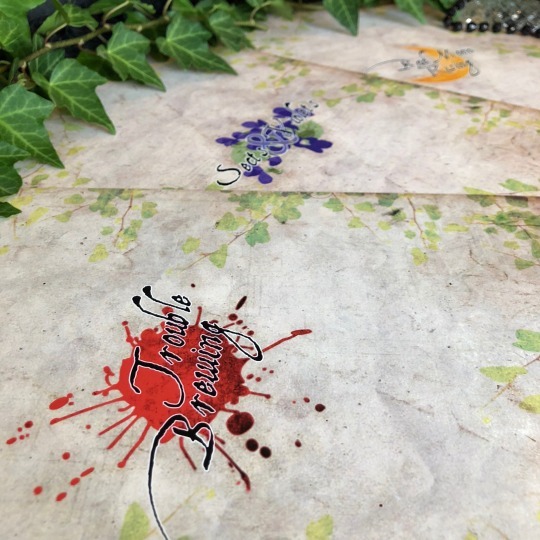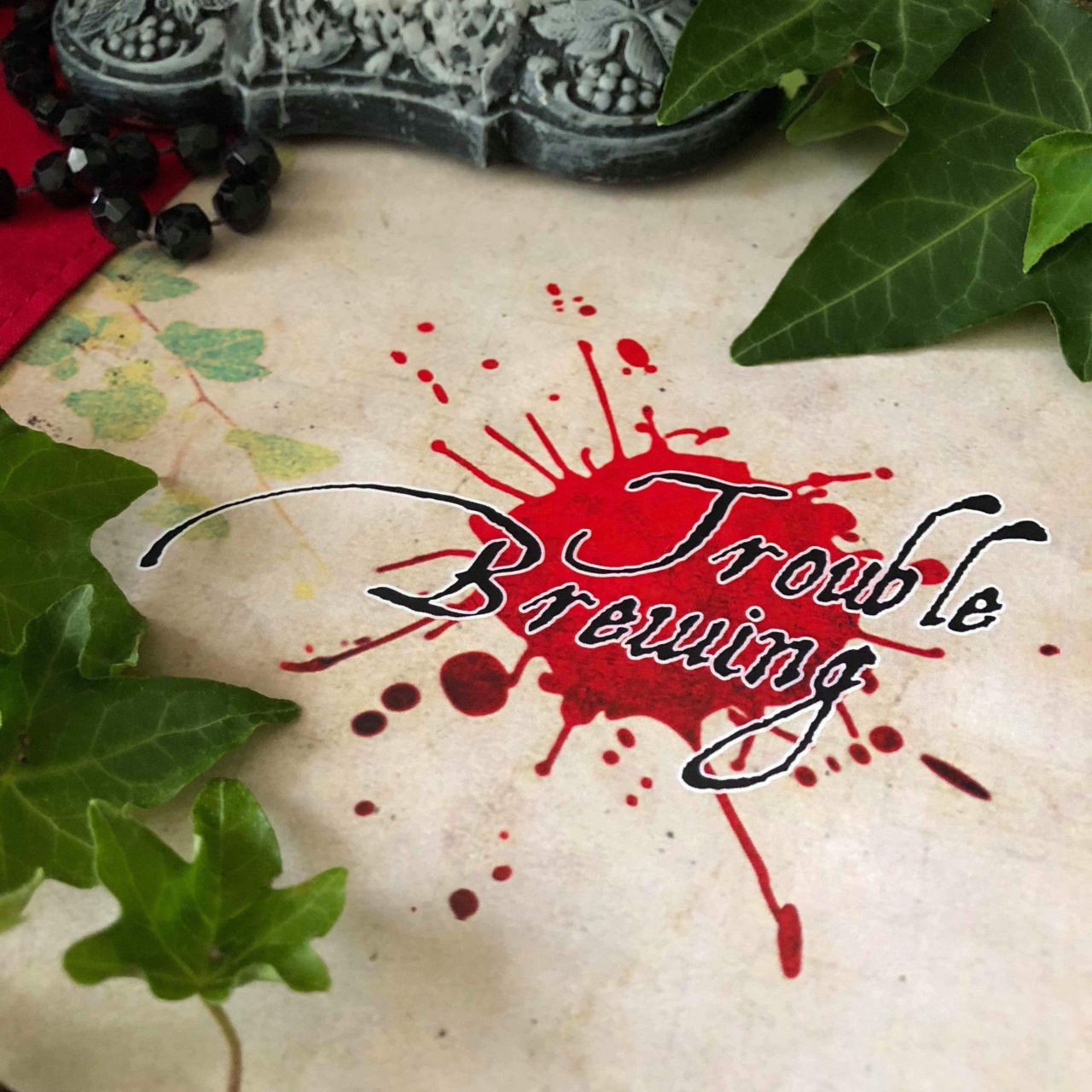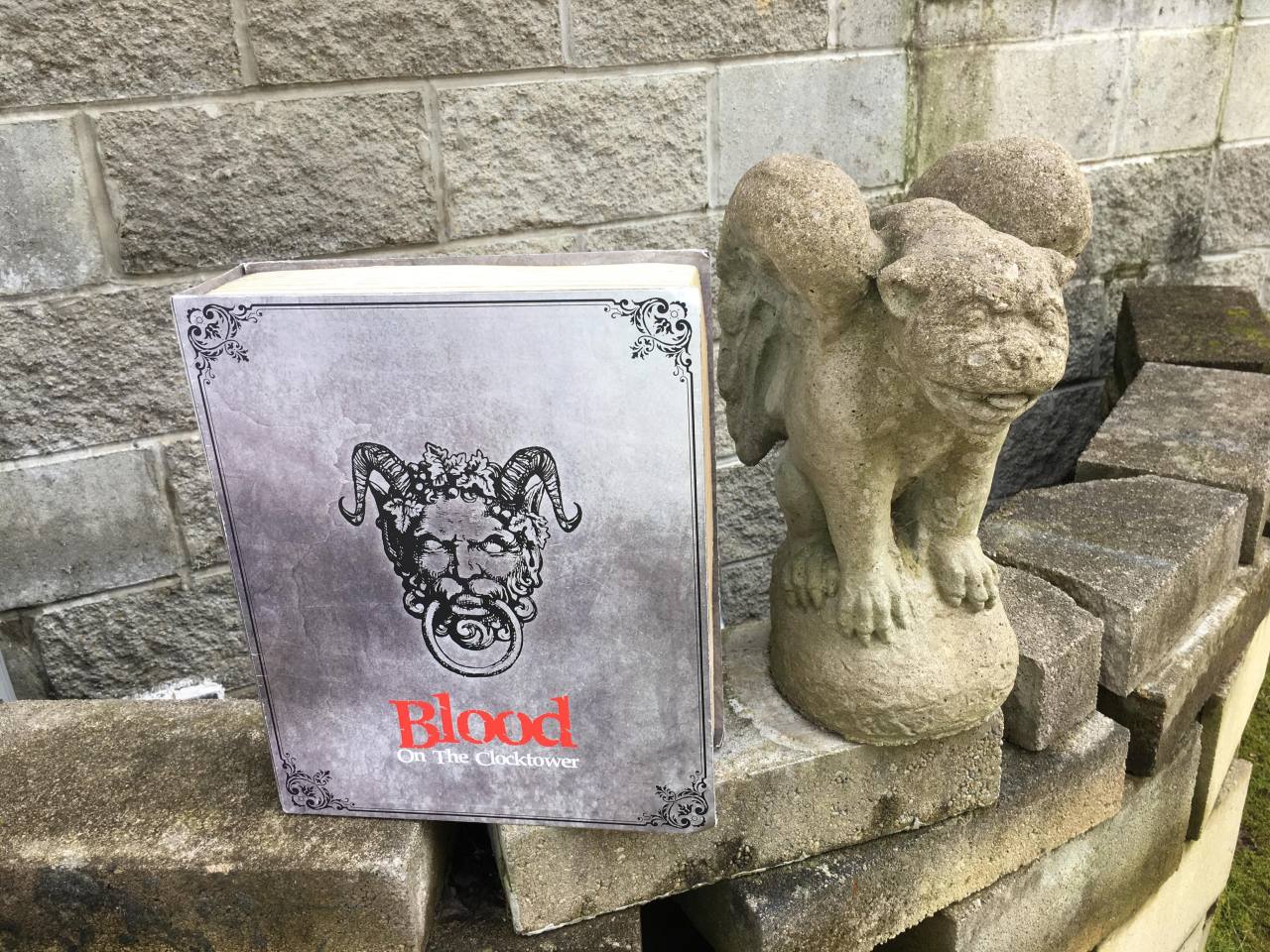So, you’ve played Trouble Brewing… what’s next? What can you expect in the other editions? Are there sharks in these deeper, darker waters?
Yes.

Whilst it is great news that many of you are enjoying Trouble Brewing and going deeper into that edition, Blood On The Clocktower has a lot more to offer than just Trouble Brewing. Different themes, mechanics and characters create different strategies, and the strategies of the players – strategies they discover for themselves – are the fundamental building blocks of memorable, intense, and thrilling games.
Trouble Brewing
Trouble Brewing is the “beginner” edition of Blood On The Clocktower, and the one that you are almost certainly most familiar with. There are layers and layers of information, multiple reasons for events, and an incredible amount of strategies available for both good and evil players alike. If you never move beyond Trouble Brewing, I still believe that you will have dozens, if not hundreds of hours of enjoyable game-time. It’s got real GUTS to it, even for advanced players.

From the rulebook:
“Trouble Brewing has a little bit of everything. Some characters passively receive information, some need to take action to learn who is who, while some simply want to bait the Demon into attacking them. Both good and evil can gain the upper hand by making well-timed sacrifices. Trouble Brewing is a relatively straightforward Demon-hunt, but evil has a number of dastardly misinformation tricks up their sleeves, so the good players best question what they think they know if they hope to survive.
Beginner. Recommended for players and Storytellers new to Blood on the Clocktower or to social deception games.
Good players will need to figure out who is good and who is evil by using logic and intuition. Some players may want to reveal which character they are and share their information immediately (such as the Chef or Investigator), while others may want to lie about their identity so that the Imp avoids attacking them (such as the Undertaker or Fortune Teller). Some may lie about who they are so that the Imp does attack them (such as the Ravenkeeper or Soldier)!
Other good characters gain information by doing something and noticing the effect. Sacrificing one’s life by nominating a Virgin, attempting to kill the Imp as a Slayer and noticing what happens, or deliberately killing good players so that the Undertaker can confirm which character they were—these are all ways to sacrifice life and power to gain information and achieve victory.
Evil players will need to pretend to be good characters and do so well, giving false information to confuse the good team if necessary. With only true information, the good team will usually find out who is evil with enough time to spare. But with even a little believable falsehood in the air, evil has a chance. The Poisoner and Spy, if they pay attention, can cause huge confusion in the good team’s ranks by using their abilities sneakily. Evil will also need to decide when to make sacrifices. Will the Scarlet Woman kill the Imp to save their team? Will the Imp kill themselves to turn a more trustworthy player into the Demon?”
The essence of the Trouble Brewing experience is probably one that you are already familiar with… some people are good, some people are evil; and if you are evil - you need to pretend to be good; and if you are good - you need to figure out who is evil. The ways that Trouble Brewing goes about making this interesting is explored in Behind the Curtain: Total Chaos? Sort of and Behind the Curtain: Strategy. Beginner, Intermediate, Advanced.
For the other editions of Blood On The Clocktower, I wanted to do something different. Not just put extra characters in, but change the nature of the game itself – its goals, strategies, and feel. “Are you evil?” is kind of a boring question if asked without context, so I wanted to change not just the context, but the kind of questions that were typically asked.
If you are a Storyteller and want to provide more challenge and variability for your players, please consider the other editions. They take a lot more focus on your part, but also allow for much more creativity and engagement.
Bad Moon Rising
In Bad Moon Rising, the good players receive little information passively. They don’t just sit there, get woken up at night, and reveal that information to the group. Each BMR character has a power. Something brutal, effective, and game changing… but only if used with diligence. It is up to the players to be proactive, to talk to others, and to use their character powers effectively in order to gain any information at all. Minions and Demons kill multiple times at night, and the good team will need to pay close attention to who died at night, and why. Figuring out exactly why 4 people died in the night, or why nobody did when you were expecting 4, is more crucial than figuring out who is good and who is evil.

From the rulebook:
“Bad Moon Rising is a death extravaganza. Demons kill multiple times per night, and Minions get in on the action too. Good players can take great risks to gain reliable information, but may accidentally kill their friends in the process. Luckily, there are many options to keep players alive long past their use-by date. If the good team cannot determine which specific Minions and Demons are in play, however, their doom is all but certain.
Intermediate. Recommended for players who are proactive, dedicated to working as a team, and don’t fear dying.
When playing Bad Moon Rising…
Good players will receive little information by being passive. Some Townsfolk abilities require the good team to execute players in order to gain information (such as the Tea Lady or the Pacifist), whilst others encourage good players to take risks that may end in death in order to find out who is who (such as the Gambler or the Gossip). When good players do something, they learn something.
The good team will also need to pay close attention to who died at night, and how. If they ignore this, they risk losing unexpectedly at the end of a day with four, five, or even six players still left alive. However, if they can figure out how each player died at night, they can figure out which evil characters are in play—letting them avoid losing the game to the dreaded Mastermind or the intimidating Po—and get helpful clues on which good characters accidentally killed which players (such as the Regent or the Tinker).
Evil players may feel invincible at first, but they will need to use their abilities with precision and prudence in order to win. The Demon may need to convince the good team that a different Demon is in play to avoid the crippling effects of some good characters (such as the Exorcist or the Courtier), and may need to deliberately not kill to do so. But if the Demon can figure out who to attack and who to avoid attacking (such as the Tea Lady’s neighbors, or the Fool), then the good team is in serious trouble.
The Minions will need to time their abilities well. A well-timed Assassin’s kill, a patient Devil’s Advocate, or a Mastermind that can read a room can pull victory from the jaws of defeat.”
In Bad Moon Rising, good players don’t passively get their information. Their character abilities are “power” abilities, but they are structured in such a way that their effective use grants the player information. So, by being proactive and paying attention to who dies, and coming up with theories on how and why each player died, they learn which players to trust.
Sects & Violets
Sects & Violets is the opposite. All Townsfolk receive information. Most do so passively. And most of that information is fantastically useful. The good team has an overload of useful information. However - and this is a big, big, however – the Demons can make all of that information false, some of that information false, or change characters around so that even if the information is true, it needs to be disentangled. S&V is very much a game of information, and the good players are incentivized to lie as well. Players change characters. Characters change alignments. Sometimes Minions accidentally kill their own Demon.

From the rulebook:
“Sects & Violets is the craziest of the three editions included in the base set. Good characters get amazing information each and every night. However, the evil team is extremely varied and threatening and can throw massive confusion into the mix. Characters change alignment. Players change characters. Even the evil team can lose track of who is who. This is also the first appearance of madness, which throws all manner of spanners into the works.
Intermediate. Recommended for players who want to do wild and unexpected things, pushing the limits of what can be achieved in a bluffing game.
When playing Sects & Violets…
Good players will almost always have more information than they know what to do with. Unlike in Trouble Brewing, where the good team can trust most of their information most of the time, the good team in Sects & Violets will need to figure out which Demon is in play to even begin to make sense of what’s going on. With a Fang Gu in play, all information is true, except for any that pertains to the Demon, who may swap players. With a No Dashii in play, two Townsfolk are poisoned, but if the good team can deduce which players these are, they’ll have found the Demon. With a Vortox in play, all information is false. Once the good team notices what information is right and what is wrong, they can backtrack and reverse what they thought they knew and begin to learn something valuable.
To confuse things even further, Outsiders will usually want to lie about who they are for most of the game, and maybe even some Townsfolk will want to do the same. An Outsider that dies can cause terrible disadvantages for the good team, so wise Demons will usually want to kill them as soon as possible.
Evil players will want to kill or otherwise remove the threat of the most dangerous Townsfolk as soon as possible. Demons can only kill once per night, but Minions such as the Pit-Hag, Witch, and Cerenovus can really help thin out the good team’s ranks if the Minion is clever. Evil players should also consider whether they give true or false information to the group, since the group may reverse-engineer that information depending on which Demon they believe is in play.”
In Sects & Violets, there is so much information available to the good players, it is downright silly. But with Demons that can make some or all of this information false, the good team will need to figure out precisely which Demon is in play, so that they can figure out what information can be trusted.
Beyond the Base Three Editions
Trouble Brewing explores good and evil, information and misinformation, and sacrifice. Bad Moon Rising explores power and consequences, and unknown causes of death. Sects & Violets explores changing characters, good players lying, and reverse-engineering information overload. The experience of playing – and of Storytelling – each edition is quite different, not just more complex.

Trouble Brewing encourages players to ask the question “Are you good or evil?”, whilst other editions encourage different questions: “Which evil characters are we facing?”, “How did you die?”, “How do I combine my ability with others?”, “What does this provably false information mean?”, “Is the Demon already dead?”, “How do we win with this new victory condition?”, “If the old strategy won’t work here, what is the new strategy?” and others.
The editions that are currently being designed and refined explore even more questions and themes, again providing a fresh experience for your players.
Garden of Sin explores alignment change, logic, and creativity for the Storyteller. Garden of Sin is an intermediate edition of pure and applied logic. The Demons do not kill, and instead have various powers based around time limits, which means the good team does not need to play the “try to survive” game to use their abilities to the full. Many characters encourage the Storyteller to actually create their own rules and abilities, and the edition is a very complex one, but with a more relaxed pace. You’ll like Garden of Sin if you liked Sects & Violets, because it is all about various layers of truth overlapping in predictable but fragile ways.
The Tomb explores executions and nominations, with benefits, restrictions and incentives to kill certain players and not others. The Tomb is also intermediate and is all about executions. Who do we kill? Shall we kill a known good player in order to get closer to a known evil player? A lot of the evil characters act publicly, flaunting their evilness in the face of the good team, but having awesome power to compensate. This edition is still under construction though, so we’ll see how the final thing turns out.

Midnight In The House Of The Damned explores extremely risky bluffing, private alliances, and misinformation for the evil team. This is the only planned advanced edition. All I can really say right now is that it is extremely challenging for both teams. Even the evil team may not know exactly who is on their side. This is a game of whispers, secret alliances, and extremely risky bluffing. Unlike other editions, some characters are able to win or lose the game for their team singlehandedly.
Each edition is quite a different experience to the others, with some players loving one but not being fond of another. These editions are not for everyone but should provide more depth and challenge for your rapidly developing savvy players to chew on. They are not yet finished, even though they are being play-tested and are looking promising. Certain characters are getting tinkered with or swapped out if they co-ordinate and perform better in different editions.
Create Your Own Edition
You don’t need to wait for these expansions to create something different, though. Using the Script tool, you can create your own games that explore your own ideas. Maybe you want to theme a game around characters that act during the day? That creates its own tone and strategies. Maybe you want to theme a game around Poisoning, and have the Mathematician in a crucial role? That will certainly be something for a more advanced group to tackle. Maybe you have a Kickstarter copy of Legion (a demon that is many demons), and want to craft a unique experience around the combination of 3 particular Townsfolk facing a hoard of evil? Go for it. It may not work… but it may work brilliantly! There is an art to creating your own Scripts, and it may not be ideal the first time around. But, with a little trial and error, you can make original games with original strategies for your players to explore.

Sometimes, the inclusion of a particularly powerful character can change the nature of the game all by itself. Leviathan, for example, changes the game to one that is long, considered, and deeply logical with no player death, whilst Riot creates a game that is like a hot-potato of carnage and rushed, bad, instantly regretted decisions. The Scarlet Woman creates a more relaxed, safe environment for the evil team to bluff, whereas the Evil Twin really puts the pressure on. The Witch or the Courtier can generate an atmosphere of paranoia and reservation, whilst the Gossip, Savant, or Pixie tend to generate discussion and the free flow of ideas. Once you are familiar with running Bad Moon Rising and Sects & Violets (be warned though… they are more challenging for the Storyteller too!), experiment with the Script tool and see what works best for you and for your group. Each official edition has been carefully crafted to offer the most interactive and interesting experience possible, so I heartily recommend that you get familiar with the ins and outs of Trouble Brewing, Bad Moon Rising, and Sects & Violets before creating your own games.
And Back to Trouble Brewing Again…
Trouble Brewing introduces many of the concepts that are explored more deeply in later editions. It acts as a living tutorial for the other editions. The more you play Trouble Brewing, the more that navigating the mental gymnastics around drunkenness and poisoning become second nature, the more that you get used to some of the basic strategies of the game, such as sharing information, figuring out not just who is good and who is evil, but also which characters are in play, and how to use abilities to your advantage. Trouble Brewing takes the basic concepts of social deduction – lying, and figuring out who is lying, and adds a whole bunch of misdirection, information, and strategy on top of that. But at its heart, Trouble Brewing is still Mafia-like. The beats are familiar, and you’ll find some familiar styles of characters here.

The other editions require players to navigate around very different questions, and very different gameplay. The strategies are different, the information is different, even the goals are different. You can certainly jump into Bad Moon Rising or Sects & Violets as a player without playing Trouble Brewing first, but the learning curve will be steeper. If you have a single new player in the group, I do not recommend everybody playing Trouble Brewing “just so the new player understands”, because the veteran players will still make connections faster and outpace the beginners. Instead, I recommend using the Revolutionary, so a new player can team up with a veteran and learn as they play.
For Storytellers though, getting familiar with Trouble Brewing first is a must – the other editions encourage and even necessitate Storyteller creativity, and for that you’ll need a solid foundation of how things work.
I originally thought that Trouble Brewing would have about twelve months life for regular players. It’s five years later, and new strategies and stories are still coming out of it. Some of the best games I’ve ever experienced have been in the last six months, and others have told me the same story. Trouble Brewing doesn’t necessitate complex lying or insight, but it certainly rewards it. I know I sound like a shill, but damn… Trouble Brewing still regularly gives me games so exciting that they are the highlight of my week – not because the game delivers it in a top down way, but because it provides the building blocks to allow myself and other players to do it for ourselves.
In Trouble Brewing, knowing whether someone is good or evil is usually enough to get a handle on things. When you go beyond, into the other editions, you’ll need to know much more. I guess the biggest difference, though, is the way they feel to play. When watching, they seem similar. But to play, Trouble Brewing feels like a slow unmasking of villains in a who-done-it murder mystery; BMR feels like everyone has a lit cannon and has a big shield and is slowly deciding where to point them both; S&V feels like someone put all the lost pages of a Da Vinci notebook in a bag with some Far Side comics and you’re pulling them out one by one not knowing which is which.
Whether you stick to the familiar beats of Trouble Brewing, or go beyond into the deeper, darker waters of the extra editions, I hope that you enjoy Blood On The Clocktower as much as I do, and that it makes an impact on your life as much as it has mine. The next Behind The Curtain article will be about how to go about constructing your own Scripts…. fun stuff!

I hope this peek into the design ideas behind Blood On The Clocktower has helped you determine whether Blood On The Clocktower is the game for you and your group. And if it is, I hope that these Behind The Curtain articles will help you really get the most out of the game - whether you are a player looking for strategy and insight, or a Storyteller looking for ways to engineer more fun for your players.
- Steven

